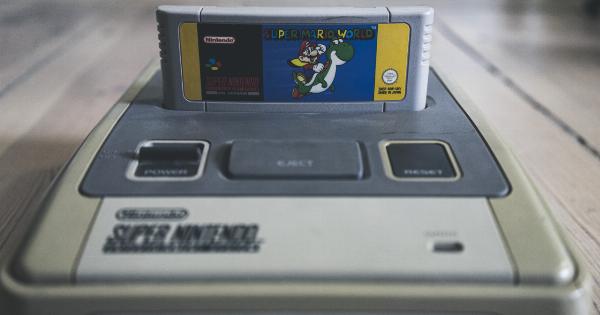Swollen fingers can be caused by a variety of factors and can result in discomfort and limited mobility.
In this article, we will explore seven common causes of swollen fingers, as well as effective treatments to relieve the swelling and promote healing. Whether you’re experiencing temporary swelling or a chronic condition, understanding the underlying cause is crucial for finding the right solution.
1. Injury or Trauma
One of the most common causes of swollen fingers is injury or trauma to the hand. A sudden impact, such as a fall or a sports-related accident, can result in finger swelling.
The swelling is usually accompanied by pain, bruising, and limited range of motion. Applying ice packs, elevating the hand, and taking over-the-counter pain medications can help reduce swelling and manage discomfort.
2. Inflammatory Arthritis
Inflammatory arthritis, such as rheumatoid arthritis, can cause chronic swelling of the fingers. In addition to the swelling, individuals may experience stiffness, joint pain, and redness.
Seeking medical attention from a rheumatologist is crucial for diagnosis and developing a treatment plan. Medications, physical therapy, and lifestyle modifications can help manage symptoms and reduce finger swelling.
3. Infection
An infection in the finger can also lead to swelling. Bacterial infections, such as cellulitis, can cause redness, warmth, and tenderness in addition to the swelling. If you suspect an infection, it is important to seek medical attention promptly.
Treatment typically involves antibiotics and wound care. Untreated infections can lead to serious complications, so early intervention is essential.
4. Edema
Edema refers to the accumulation of excess fluid in the body’s tissues. It can be caused by various factors, such as kidney or liver diseases, heart failure, or certain medications.
Swollen fingers due to edema may be accompanied by swelling in other parts of the body, such as the ankles. Managing the underlying cause, such as medication adjustment or lifestyle changes, can help reduce edema and alleviate finger swelling.
5. Raynaud’s Disease
Raynaud’s disease is a condition that affects blood flow to the extremities, such as the fingers, toes, and nose. It is characterized by episodes of coldness, color changes, and swelling in the affected areas.
During an episode, the blood vessels constrict, leading to decreased circulation and subsequent swelling. Avoiding cold temperatures, wearing warm clothing, and reducing stress can help manage the symptoms of Raynaud’s disease and minimize finger swelling.
6. Carpal Tunnel Syndrome
Carpal tunnel syndrome is a common condition that occurs when the median nerve, which runs through a tunnel in the wrist, becomes compressed. In addition to numbness, tingling, and pain, carpal tunnel syndrome can also cause finger swelling.
Wearing a wrist splint, modifying hand and wrist movements, and engaging in physical therapy exercises can relieve compression on the nerve and reduce finger swelling.
7. Age-related Changes
As we age, the tissues and structures in our fingers may naturally change, leading to swelling. Degenerative conditions such as osteoarthritis can also contribute to finger swelling in older individuals.
Engaging in regular exercise, maintaining a healthy weight, and managing any underlying conditions can help minimize age-related finger swelling and promote overall finger health.
Effective Treatments for Swollen Fingers
The treatment options for swollen fingers depend on the underlying cause. However, here are some effective treatments that can help alleviate the swelling:.
1. Cold Compresses
Applying cold compresses to the swollen fingers can help constrict blood vessels and reduce swelling. Wrap a few ice cubes in a clean cloth and apply it to the affected fingers for 10 to 15 minutes. Repeat this a few times a day for best results.
2. Elevation
Raising the hand and fingers above the level of the heart can reduce swelling by allowing excess fluid to drain. Prop up the hand on pillows or use a sling to keep it elevated as much as possible throughout the day.
3. Over-the-Counter Medications
Nonsteroidal anti-inflammatory drugs (NSAIDs), such as ibuprofen, can help alleviate swelling and pain associated with swollen fingers.
It is important to follow the recommended dosage and speak to a healthcare professional if you have any underlying medical conditions or are taking other medications.
4. Compression
Wearing compression gloves or finger sleeves can provide gentle pressure to reduce finger swelling. These garments can also help improve circulation and relieve discomfort. Ensure the compression is not too tight, as it may impede blood flow.
5. Hand Exercises
Performing hand exercises can help improve blood flow, reduce stiffness, and promote healing. Simple exercises such as finger bends, thumb-to-finger touches, and squeezing a stress ball can be beneficial.
Consult with a physical therapist or hand specialist for specific exercises tailored to your condition.
6. Medication Adjustments
If swollen fingers are a side effect of certain medications you are taking, consult with your healthcare provider to explore alternative options or adjust the dosage.
However, it is crucial not to stop or adjust any medication without professional guidance.
7. Medical Interventions
In cases where conservative measures do not alleviate the finger swelling, medical interventions may be necessary.
For instance, in some cases of carpal tunnel syndrome or inflammatory arthritis, surgical interventions may be recommended to address the underlying cause and reduce swelling.
Conclusion
Swollen fingers can have various causes and can significantly impact one’s daily life. Understanding the underlying causes and seeking proper medical guidance are important steps towards effective treatment.
Whether it’s managing swelling caused by injury, addressing inflammatory conditions, or making lifestyle adjustments, there are numerous approaches to relieve swelling and promote healthier fingers. Implementing the appropriate treatment strategies can help individuals regain comfort, mobility, and overall finger well-being.




























